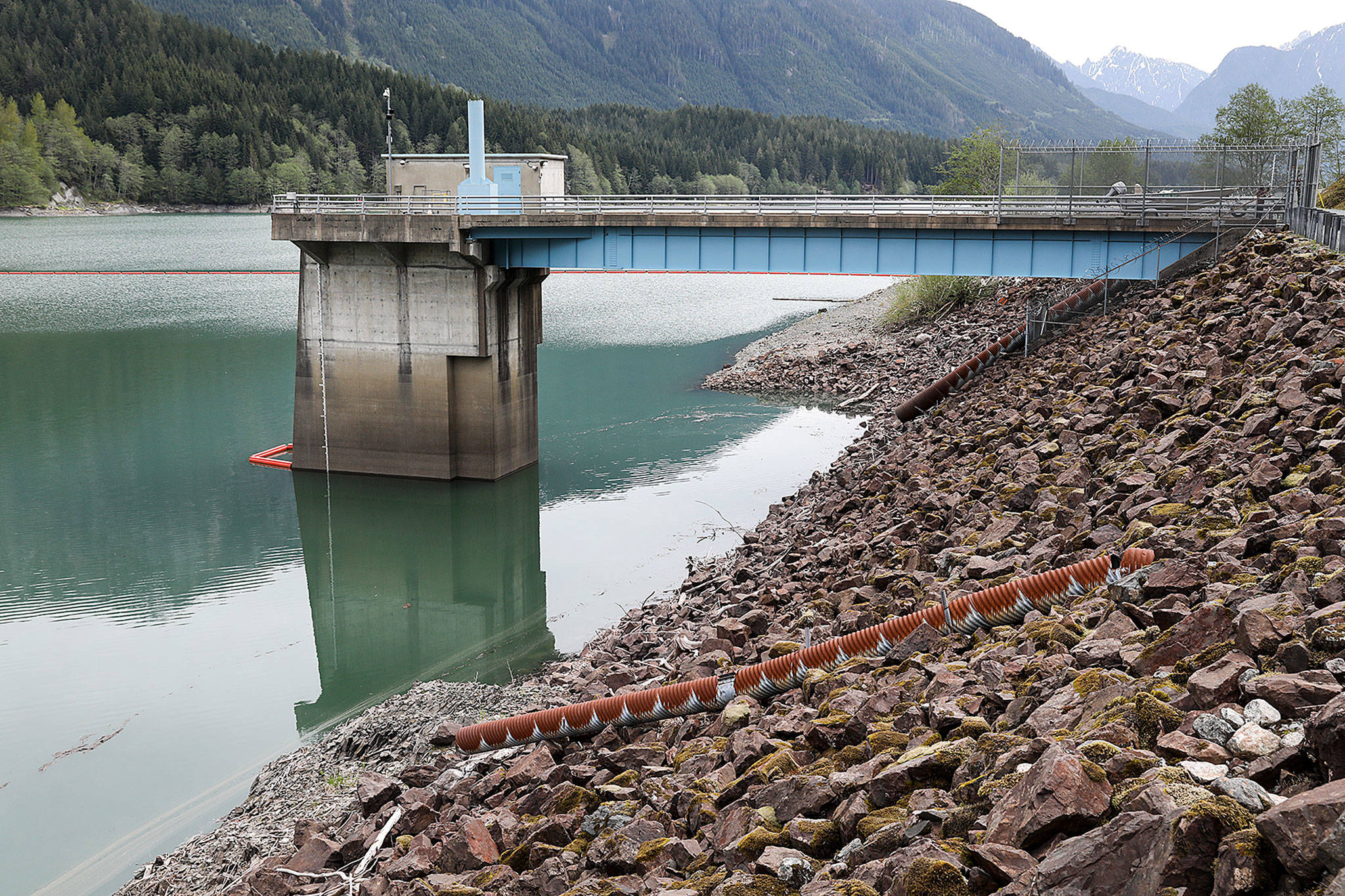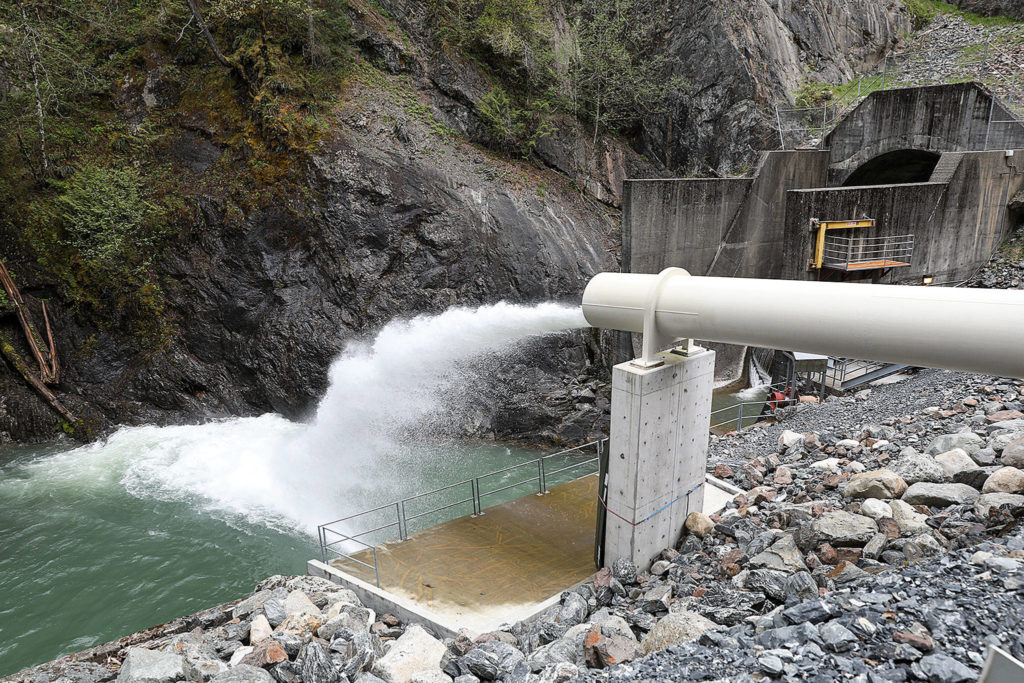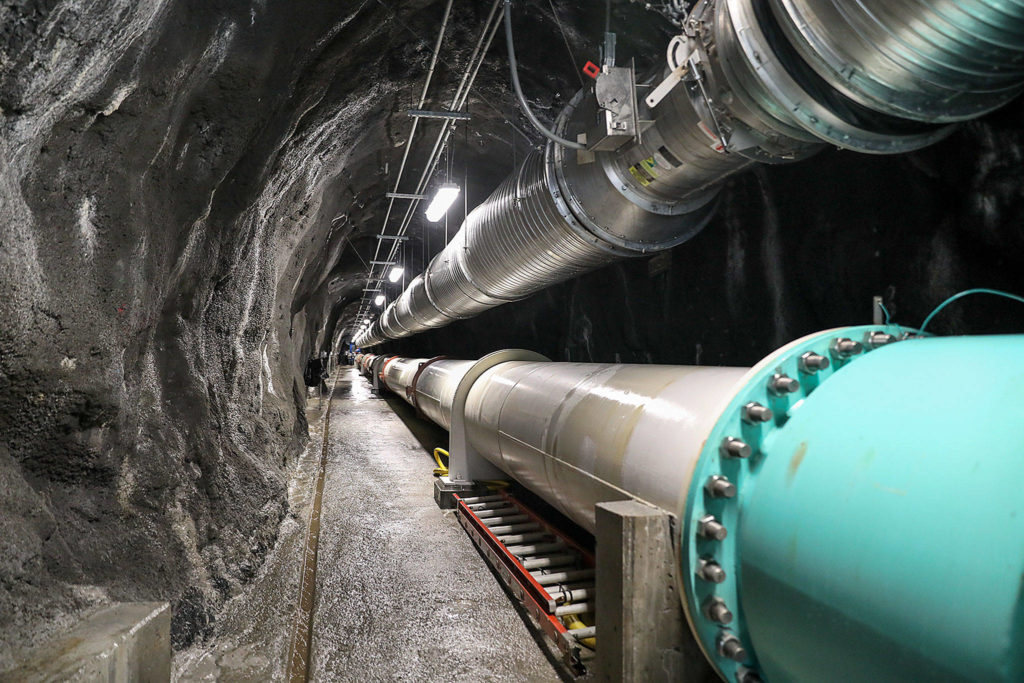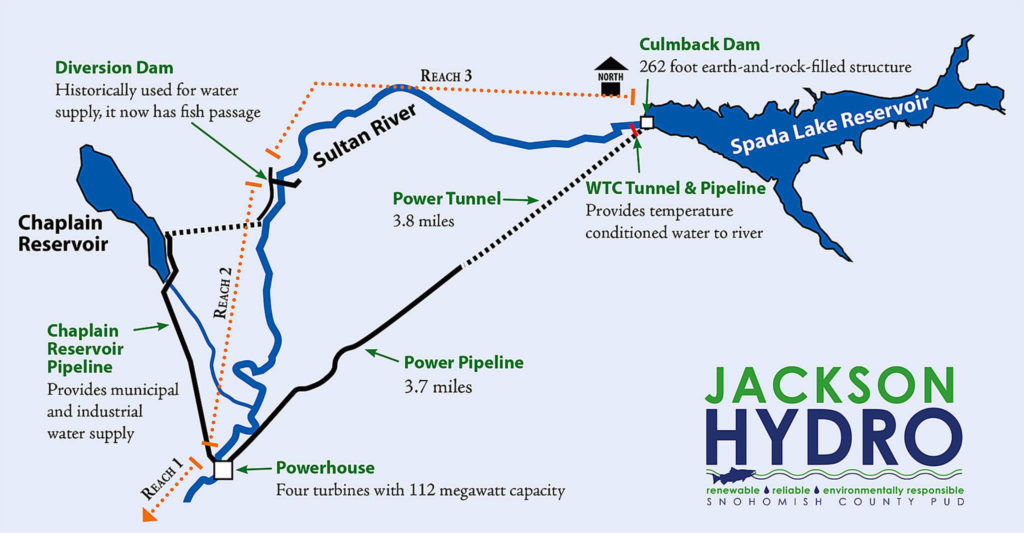SULTAN — Maintaining the ideal water temperature for aquatic life near hydropower plants is a considerable challenge. Too cold delays fish spawning and extends egg incubation time, too warm can stress the animals — sometimes to death.
In late 2016, the Snohomish County Public Utilities District opened up more than five miles of historic fish habitat in the Sultan River just past the Culmback Dam near the city of Sultan. Weeks later coho salmon were spotted using the new territory.
But the water directly entering the river from the dam was too cold for the migrating fish now working their way up that stretch. A way to better match the natural temperatures found in the Sultan River was needed.
“It’s fascinating that colonization happens so fast,” said Keith Binkley, the PUD’s natural resources manager. “Though it didn’t make sense to pass fish up into a really cold part of the river.”
The Culmback Dam sits at the western edge of Spada Lake — a whale-shaped reservoir north of Sultan. From the dam, one pipe drops water 1,100 feet to the Henry M. Jackson Hydroelectric Project about eight miles away, then into the Sultan River. The powerhouse generates enough electricity to power about 35,000 homes.
Water from the lake can take another path, and directly enter the Sultan River from the dam. At one point downriver some of the flow is pushed toward a diversion dam to Lake Chaplain, which provides drinking water to parts of the county.
Before the 2016 fish passage project, only resident fish — trout and white fish — populated the area between Culmback Dam and the diversion dam. With salmon laying eggs in the river bed, the next step was to warm up the water.
This would not only benefit migrating fish, but also other aquatic life.
If the water is too cold, spawning can be delayed and fish that emerge really late in the season may not be able to survive a winter, Binkley said. And the chilly water causes poor growth in juveniles.
The PUD ended up blasting through 715 feet of rock and connecting to an existing intake tower that can selectively withdraw water from Spada Lake at various depths. This allows the agency to control the temperature of the water being released into the river. Between April and October, the lake is stratified, meaning warmer water sits at the top, and cooler, denser water sits at the bottom.
The Water Temperature Conditioning Project was completed in the fall 2018 and was a requirement for re-licensing the Jackson Hydro Project. The fix won an Outstanding Stewards of America’s Waters Award from the National Hydropower Association.
“It’s a big benefit to the fish, to be able to dial in the temperature to what it needs to be,” said Scott Spahr, a PUD generation engineer manager.
The project will also help mitigate the impacts of climate change as snowpack diminishes and droughts become more frequent, according to Binkley, the natural resource manager.
Later in the season, if the water becomes too warm it can be lethal for the fish coming back to spawn. The project also allows the PUD to cool the water.
“We have the capability of playing with the temperature as summer advances,” he said. “Conditions in the Sultan will be favorable regardless of what’s happening in the (Skykomish River) basin.”
Lizz Giordano: 425-374-4165; egiordano@heraldnet.com; Twitter: @lizzgior.
Talk to us
> Give us your news tips.
> Send us a letter to the editor.
> More Herald contact information.





























